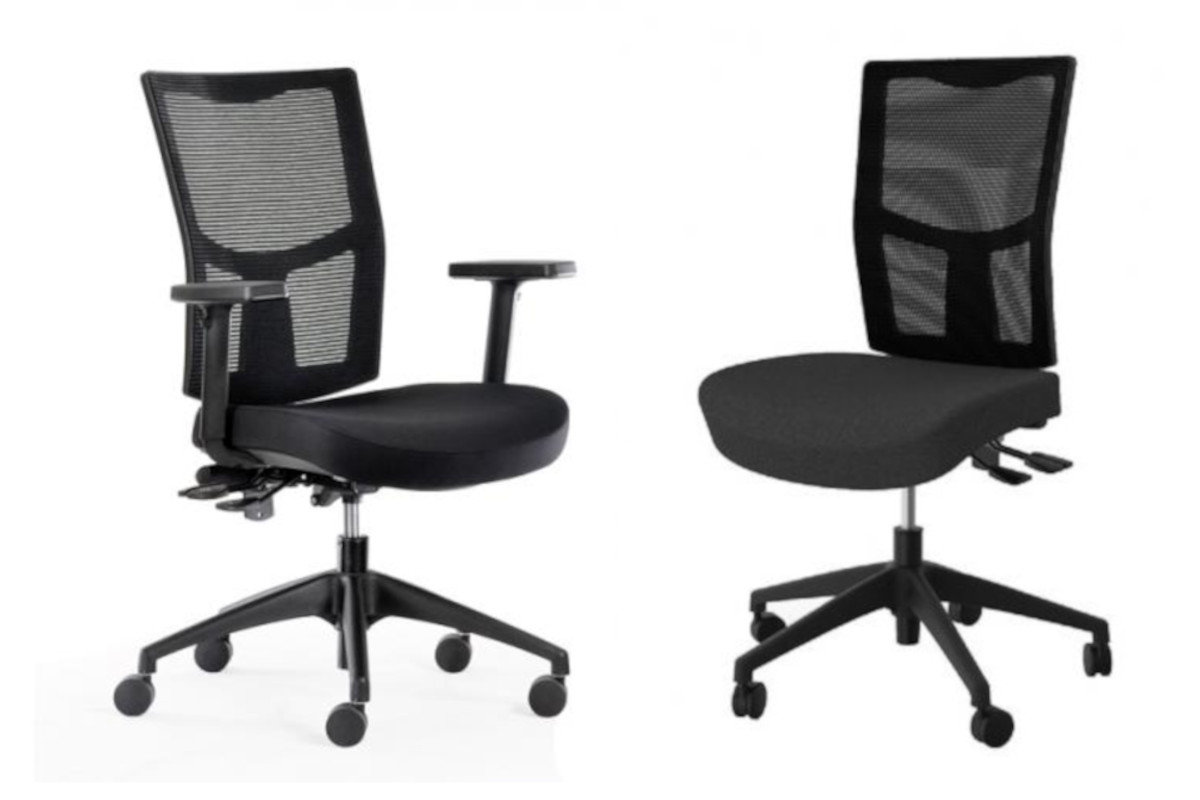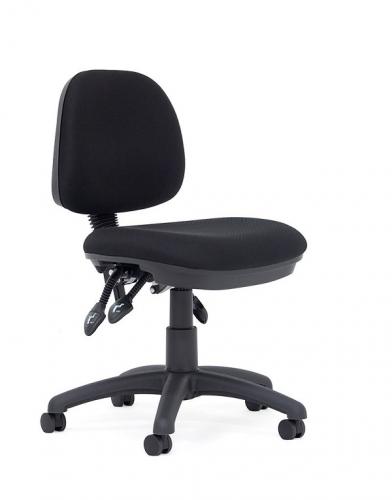Armrests vs. No Armrests: Which Office Chair is the best for your needs

Are you setting up a new home office or looking to upgrade your current workspace? One of the most critical aspects to consider for maintaining comfort and productivity is your desk chair. The debate over whether office chairs with armrests are better than those without is ongoing, and choosing the right chair can significantly impact your posture, comfort, and overall health. In this comprehensive guide, we’ll explore the benefits and drawbacks of both options to help you make an informed decision.
Why Office Ergonomics Matter
Office ergonomics refer to the design of a workspace that promotes good posture and reduces the risk of injury. Proper seating posture is crucial, especially when spending long hours at a desk. Poor seating positions can lead to common issues like back pain, wrist strain, and shoulder fatigue. Addressing these problems through ergonomic solutions can enhance your well-being and productivity. Ignoring proper ergonomics can increase the ergonomic risk, leading to long-term health issues.
Common Issues Caused by Poor Seating Positions
-
Back Pain: Sitting for extended periods without adequate support can strain your lower back.
-
Wrist Strain: Incorrect arm positioning and lack of forearm support can lead to discomfort and repetitive strain injuries.
-
Shoulder Fatigue: Lack of proper support for your shoulders can result in tension and pain.
Pros and Cons of Office Chair Armrests
Office chair armrests can be a double-edged sword when it comes to comfort and ergonomics. On the positive side, office chair armrests provide essential support for your arms and shoulders, which can significantly reduce the risk of developing musculoskeletal disorders. By offering a place to rest your arms, they help maintain a natural elbow position, alleviating strain on your upper limbs and promoting better posture.
However, not all armrests are created equal. Poorly designed or improperly adjusted armrests can lead to discomfort and even injury. For instance, armrests that are too high or too low can force your shoulders into awkward positions, causing tension and pain. Similarly, armrests that are too close or too far apart can affect your seated elbow height, leading to wrist strain and reduced productivity. Therefore, it’s crucial to choose an office chair with well-designed, adjustable armrests to ensure they provide the right support without causing additional ergonomic risks.
The Benefits of Office Chairs With Armrests
Support for Forearms and Shoulders
Office chairs with armrests provide a place to rest your arms, relieving shoulder and neck tension. I remember a time when I spent hours typing at my desk without armrests, and the resulting shoulder pain was unbearable. Switching to a chair with armrests allowed me to rest my arms, significantly reducing the discomfort. Ergonomic chairs with well-designed armrests can provide the necessary support to prevent shoulder and neck tension.

Improved Posture
Armrests can encourage better posture by keeping your elbows at a 90-degree angle. This position helps maintain a neutral spine alignment, reducing the risk of developing musculoskeletal issues over time. A good ergonomic chair with adjustable armrests can help maintain a neutral spine alignment and reduce the risk of musculoskeletal issues.
Increased Comfort
Armrests offer additional comfort during long workdays by reducing strain on your arms and shoulders. This added support allows you to focus on your tasks without getting distracted by discomfort.
Adjustable Armrests: A Must-Have
Adjustable armrests offer flexibility, allowing users to customise their armrest height and width for optimal support. This feature is essential for achieving a personalised fit that enhances comfort and ergonomics. An ergonomic office chair with fully adjustable armrests can provide a personalized fit that enhances comfort and ergonomics.
Types of Office Chair Armrests
When it comes to office chair armrests, there are several types to consider, each offering unique features and benefits. Understanding these options can help you select the best armrests for your needs.
-
Fixed Armrests: These armrests are non-adjustable and provide a stable support for your arms. While they can be comfortable, their lack of adjustability may not suit everyone, especially if you have specific ergonomic requirements.
-
Height Adjustable Armrests: These armrests allow you to adjust the height to match your seated elbow height, ensuring your arms are supported at a natural angle. This adjustability can help reduce strain on your shoulders and wrists.
-
Width Adjustable Armrests: These armrests can be adjusted in width, allowing you to customize the distance between them to fit your body size and desk setup. This feature is particularly useful for ensuring your arms are comfortably supported without feeling cramped.
-
Fully Adjustable Armrests: Offering the highest level of customization, fully adjustable armrests can be modified in height, width, and angle. This flexibility allows you to achieve the perfect ergonomic position, providing optimal support for your forearms and reducing the risk of discomfort and injury.
The Advantages of Office Chairs: Armrests vs. No Armrests
Freedom of Movement
Chairs without armrests offer greater mobility, allowing users to move around the desk freely. This unrestricted movement can be beneficial for tasks that require frequent reaching or changing positions.
Space-Saving
No-armrest chairs tend to be more compact, making them perfect for smaller home offices or shared workspaces. Their streamlined design can help maximise available space without sacrificing comfort.
Minimalist Aesthetic
Chairs without armrests often have a sleek, minimalist look, ideal for modern office designs. Their clean lines and simplicity can complement various decor styles, adding a touch of sophistication to your workspace.
Budget-Friendly
These chairs tend to be more affordable and available at lower price points than chairs with armrests. If you're on a budget, opting for a no-armrest chair can provide cost savings without compromising on essential features.
Office Chair Armrests and Desk Access
When choosing an office chair, it’s essential to consider how the armrests will affect your desk access. Office chair armrests can sometimes interfere with your ability to get close enough to your desk, which can impact your posture and overall comfort.
To ensure a comfortable and efficient workspace, consider the height and adjustability of both your desk and chair armrests. Ideally, your armrests should be height adjustable to align with your desk surface, allowing your forearms to rest comfortably while you work. This alignment helps maintain a natural elbow position, reducing strain on your upper limbs and promoting better ergonomics.
Additionally, consider the width of your desk and the armrest width of your chair. If your desk is narrow, width adjustable armrests can help you achieve a better fit, ensuring you have enough space to move freely without feeling restricted. By carefully considering these factors, you can create a workspace that supports your comfort and productivity, whether you choose a chair with armrests or without.

How to Choose the Right Office Chair for You
Assess Your Work Habits
Consider how you work: Do you sit for long hours or need frequent movement? Those working long hours may prefer armrests for added support, while people needing more movement may opt for no-armrest chairs.
Space Considerations
Measure your workspace before choosing an office chair. Compact, armless chairs are ideal for tight spaces, while larger areas can accommodate chairs with armrests.
Ergonomics and Adjustability
If you choose a chair with armrests, ensure they are adjustable for good ergonomics. Flexibility is key for achieving a comfortable and supportive seating position.
Aesthetic Preferences
Beyond functionality, some may prefer a sleek, armless chair for its modern look and minimal footprint. Consider your personal style and how the chair will fit into your overall office design.
Budget
Compare price ranges and determine how much you're willing to spend on an ergonomic chair. Remember that investing in a high-quality chair can pay off in terms of comfort and productivity.
Conclusion
Choosing between an office chair with armrests and one without depends on your individual needs, workspace, and how much time you spend at your desk. Chairs with armrests offer support and comfort but might restrict movement, while no-armrest chairs are more affordable and better for mobility but might lack ergonomic support.
After years of trial and error, I now prefer adjustable armrest chairs for longer workdays, but I switch to a no-armrest chair when working in a more mobile or creative environment. Evaluate your specific requirements and preferences to find the perfect office chair that keeps you comfortable and productive.
